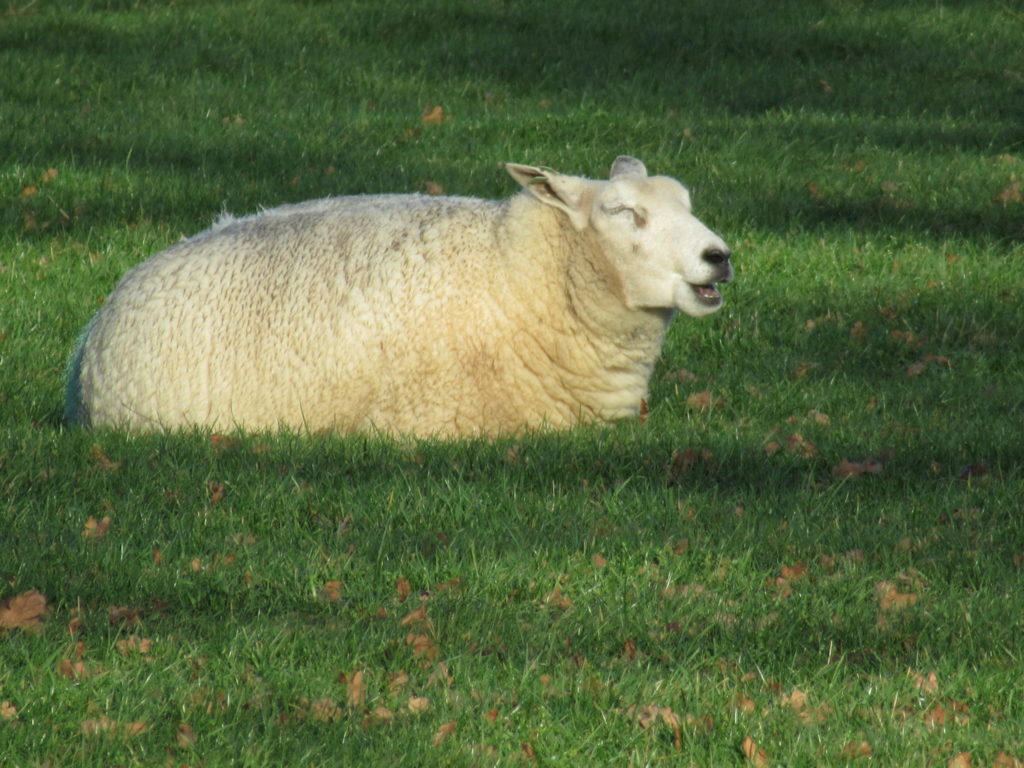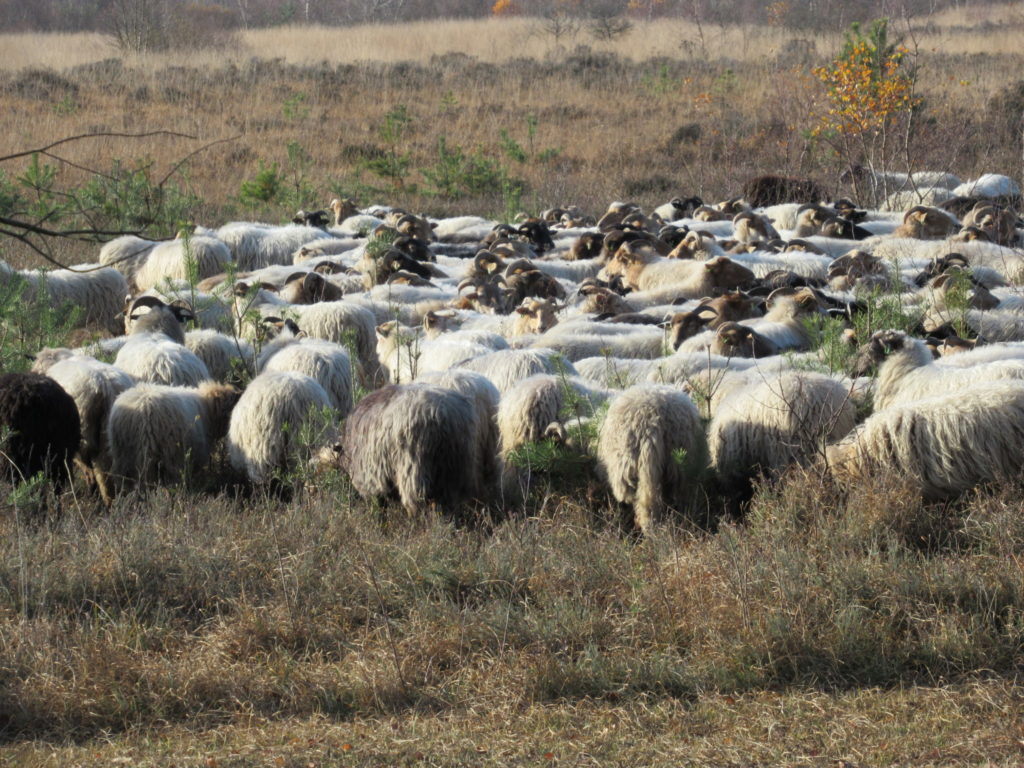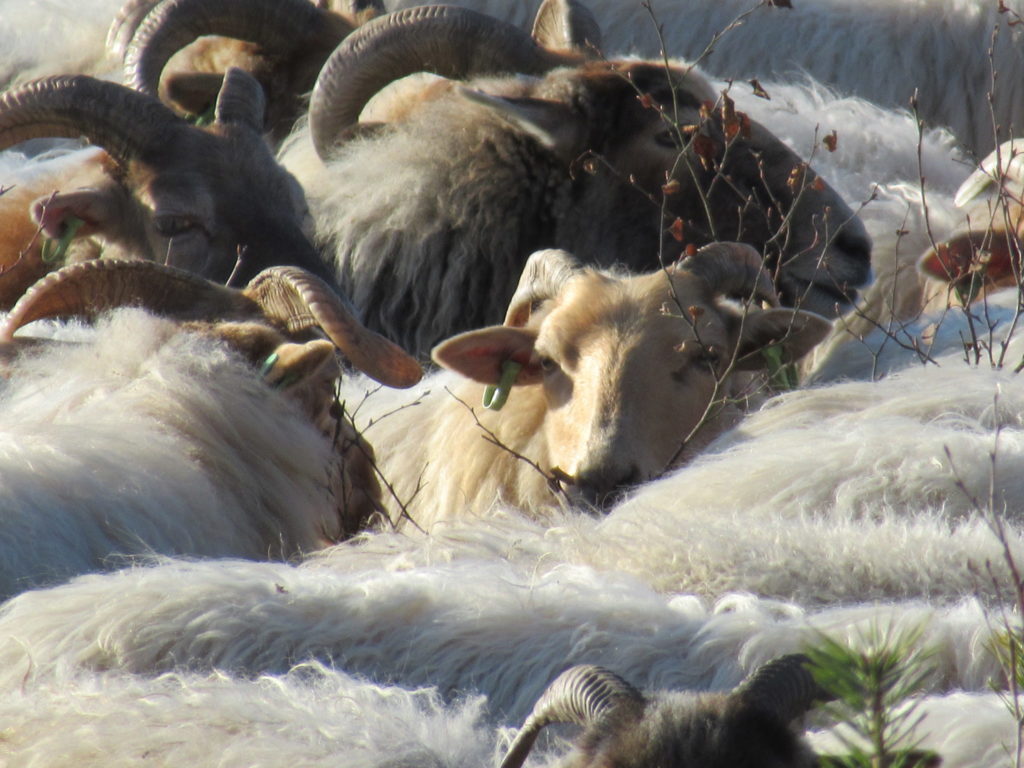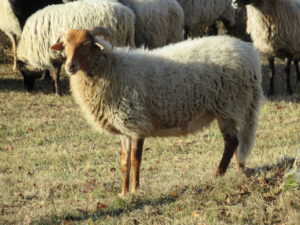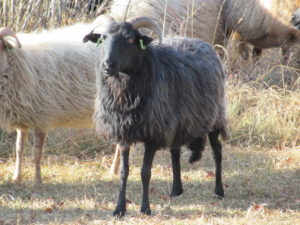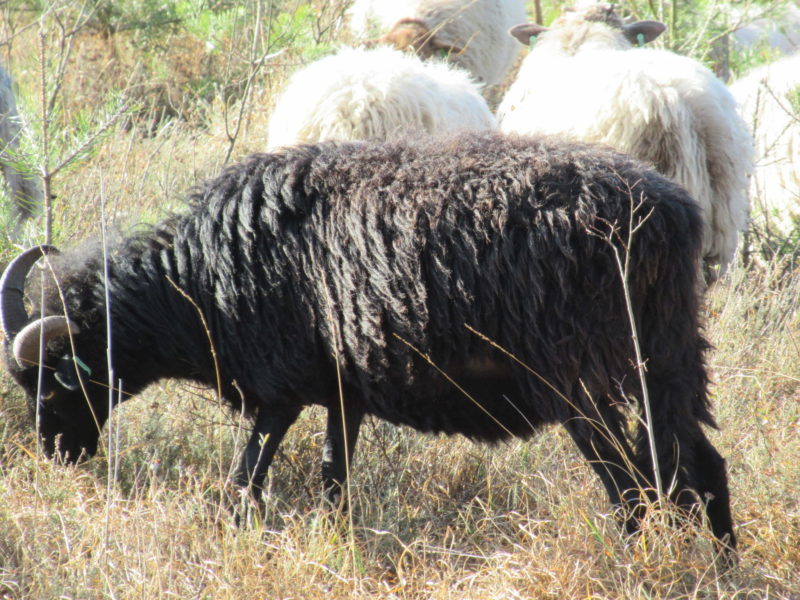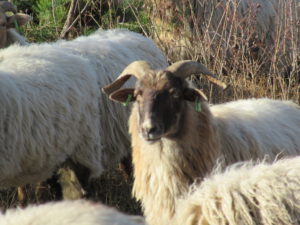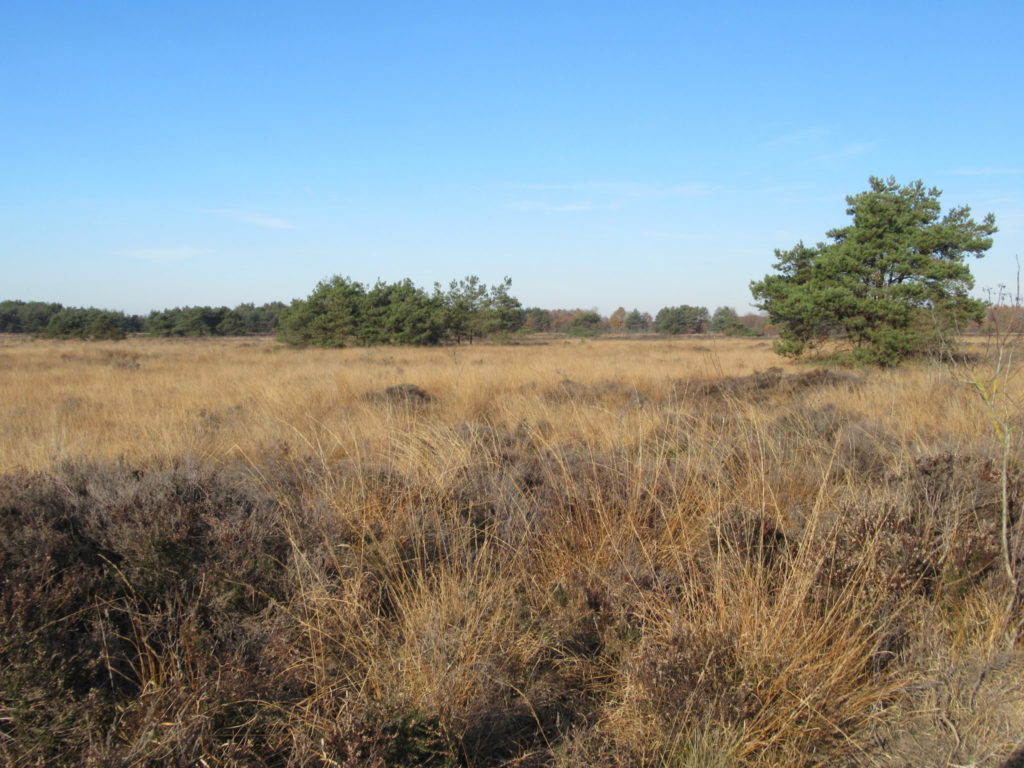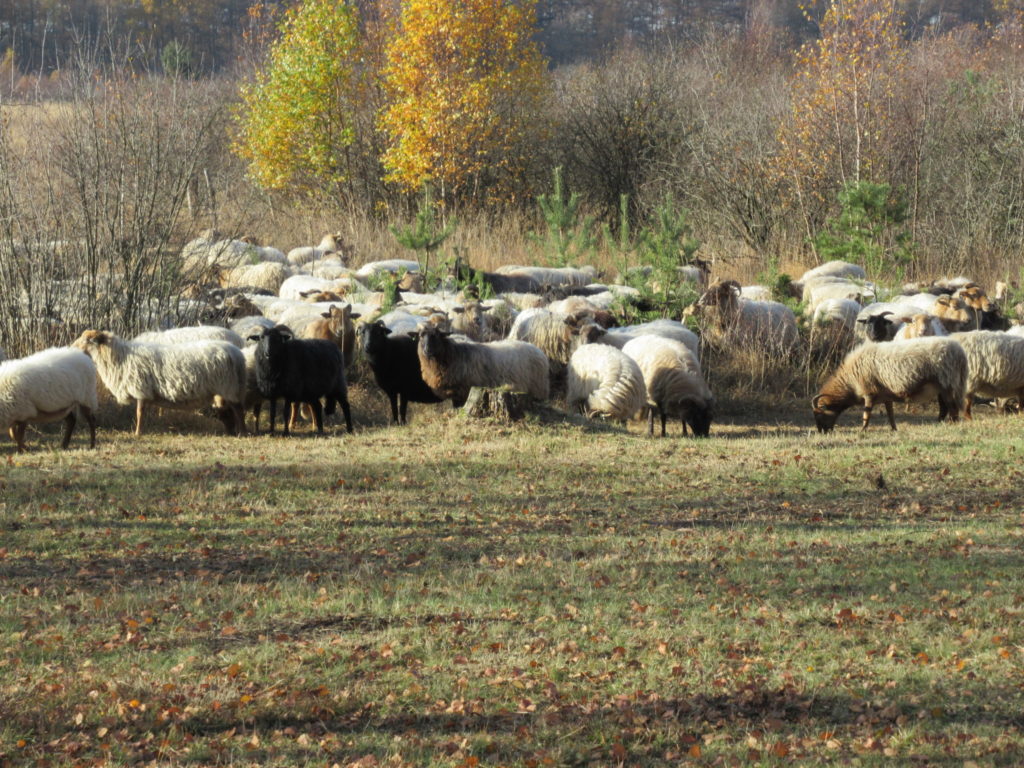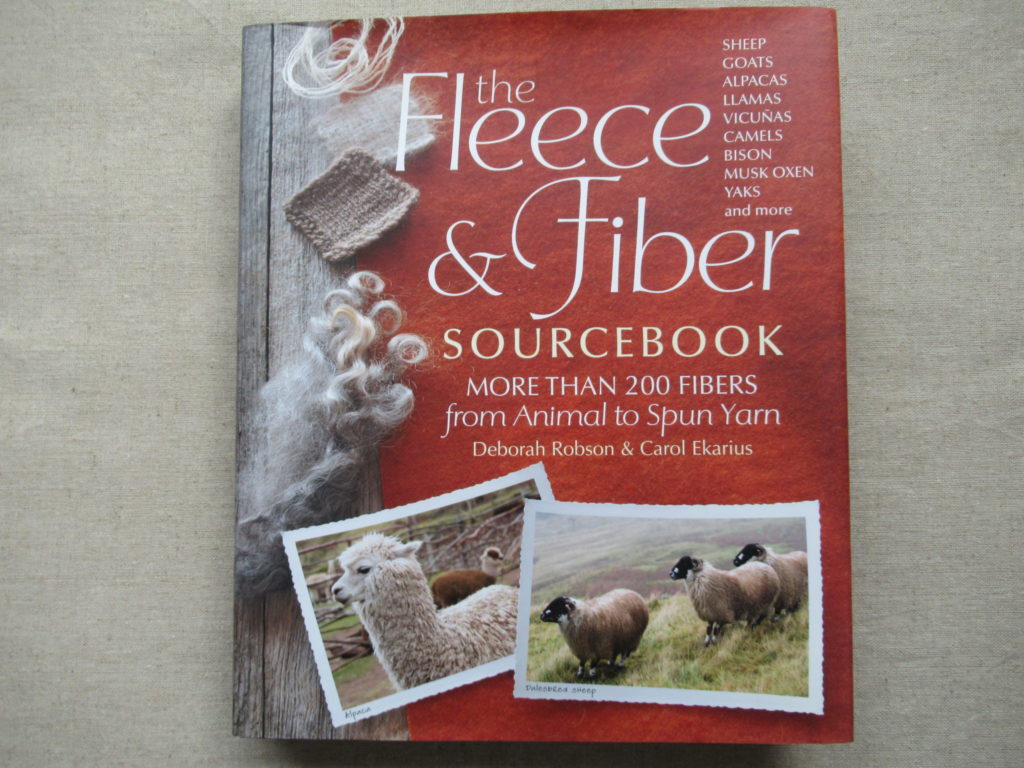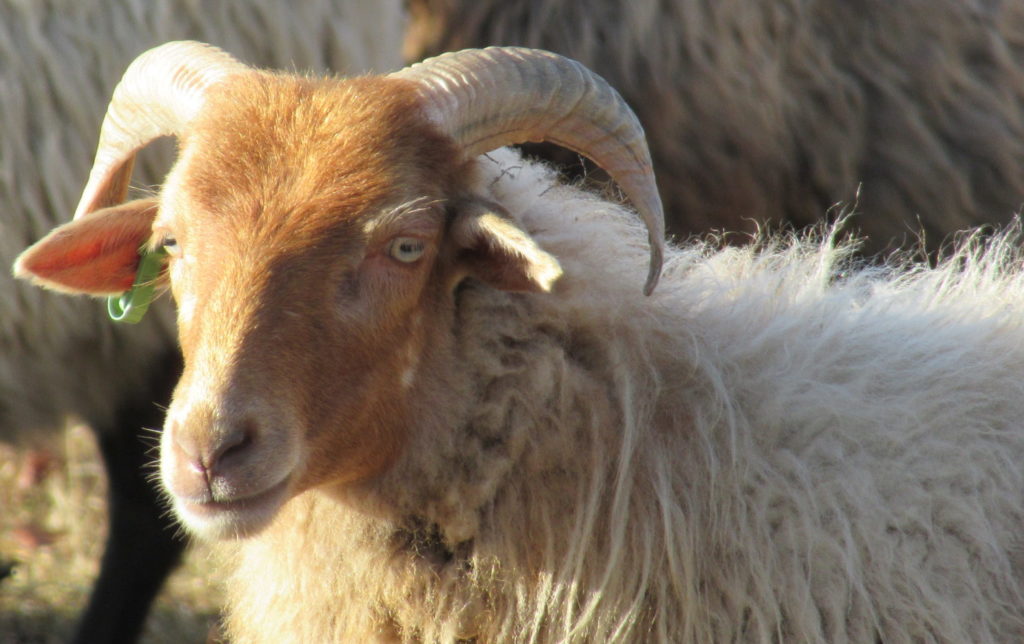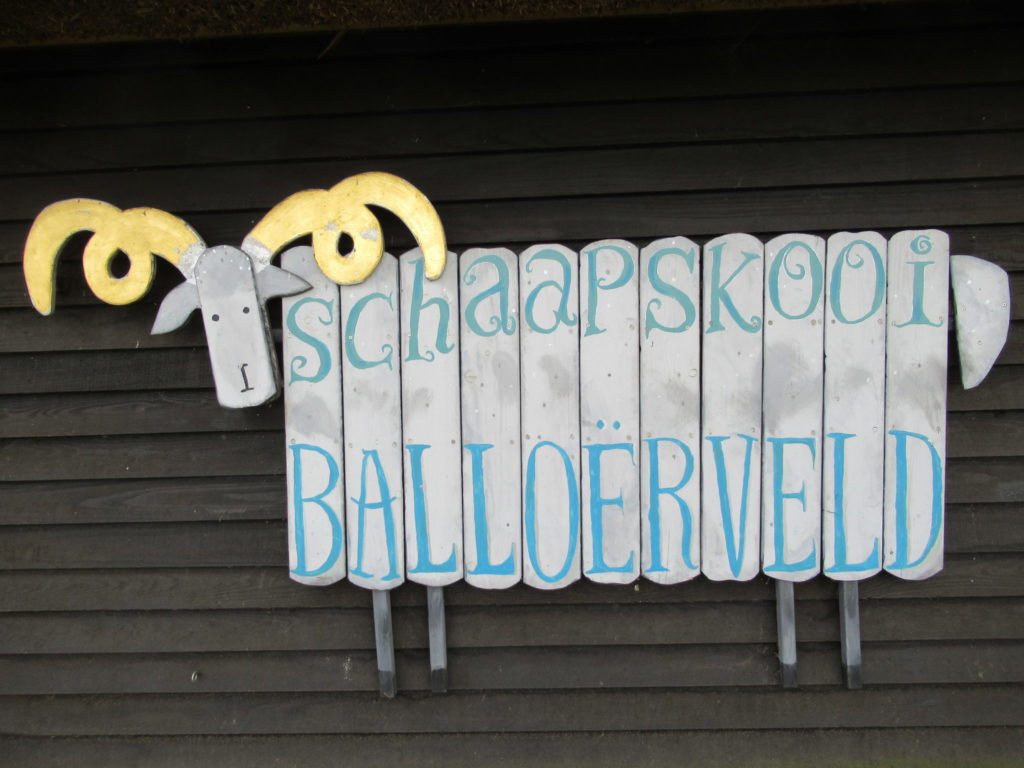
On Sunday morning we decided on a whim to pay the shepherds of Balloo a visit. It was a lovely day for a walk and I hoped we would see some newborn lambs.
When we arrived, the doors of the sheep fold were open. We could see that it was empty and the sheep were out, which was only to be expected in the middle of the day.
In 2011, the old fold was destroyed by a terrible fire. Fortunately, enough money could be raised to rebuild, and there is a new, very light and airy fold now.
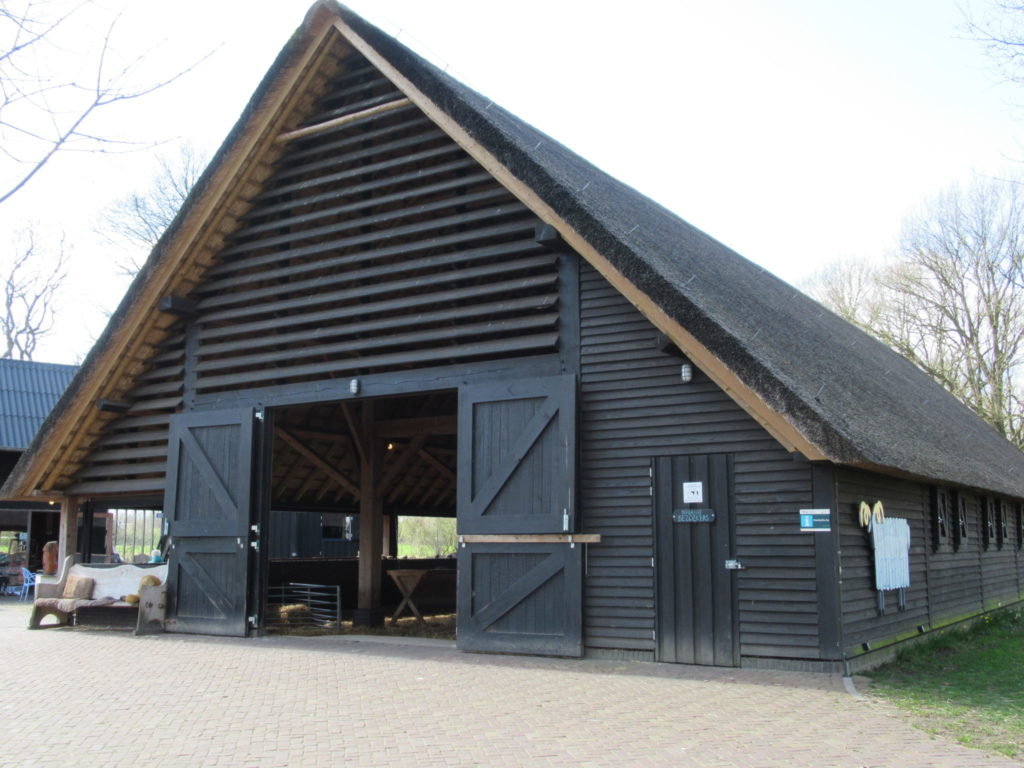
Looking inside we could see the fresh, golden straw on the floor and the wooden feeders filled with hay. In cold and wet weather the ‘windows’ can be closed with a kind of roller blinds.
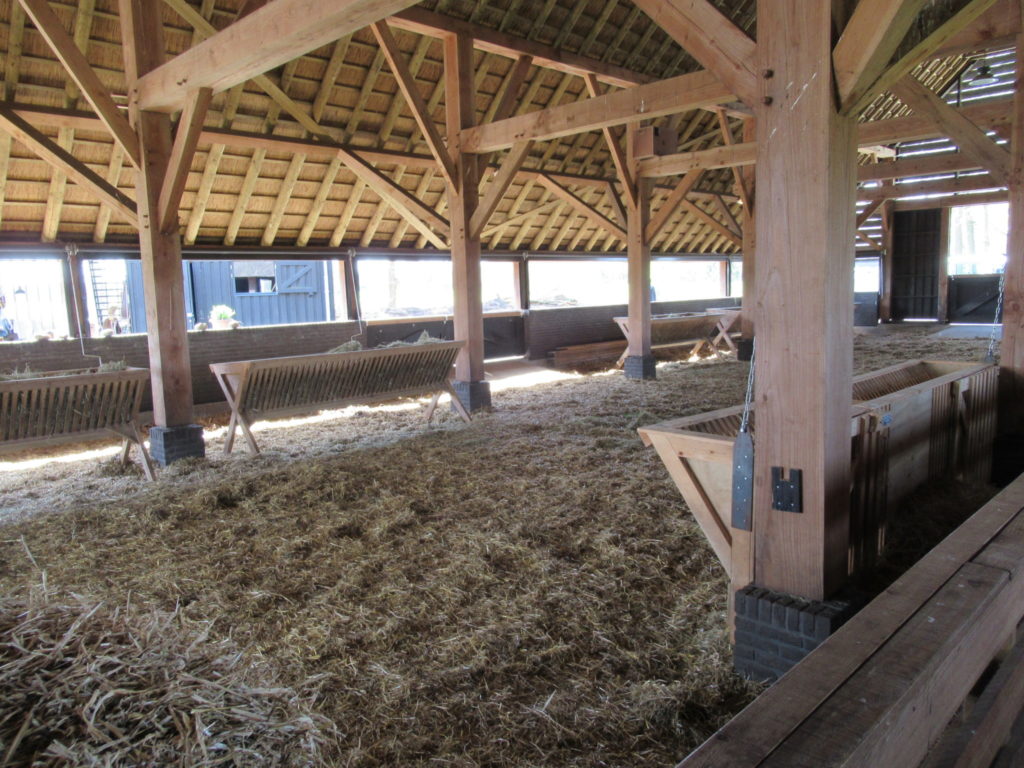
The area where these sheep roam is not very big, so we should be able to find them. The wind was a bit nippy, but otherwise it was a lovely dry and bright day. The start of our walk took us along a cycle track:
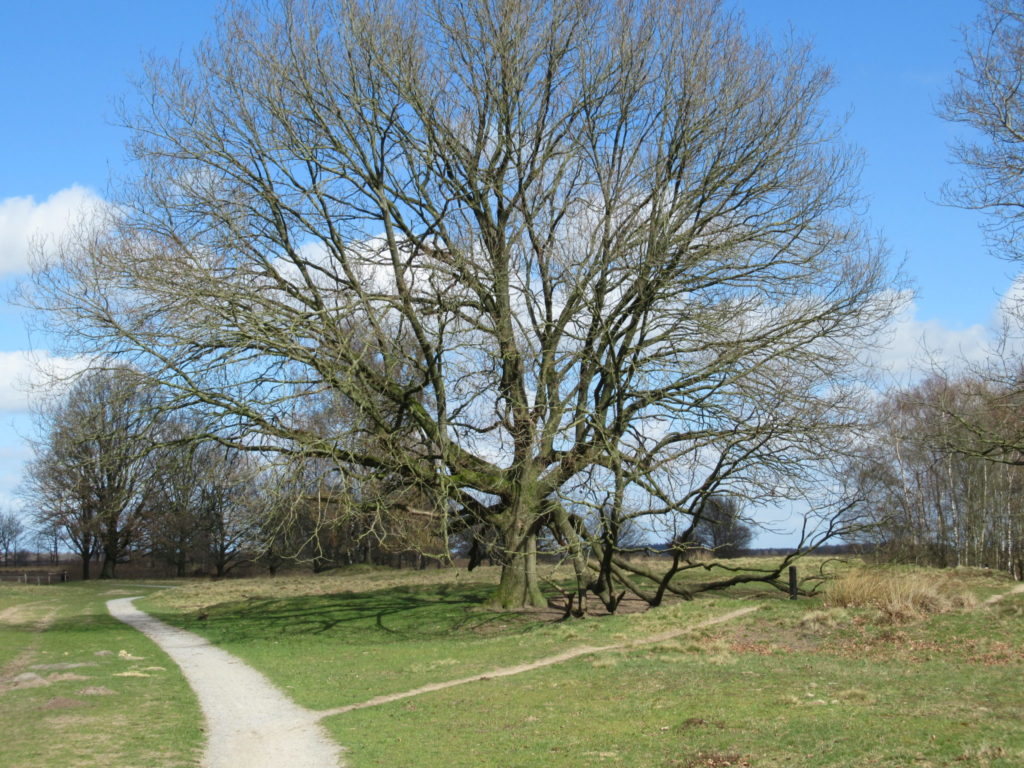
Very soon we turned right, onto a sandy path and the heath. Although spring has arrived in our garden, the landscape here still looked bare and wintry.
I haven’t discovered how to share the sounds and smells of our walks with you here other than catching them in words, so that’s what I’ll try to do. Well, I don’t know about the smells, but for a soundtrack to this walk think of the soughing of the wind and the song of skylarks, climbing higher and higher into the sky. Nothing else. No cars, no planes, no traffic noise at all.
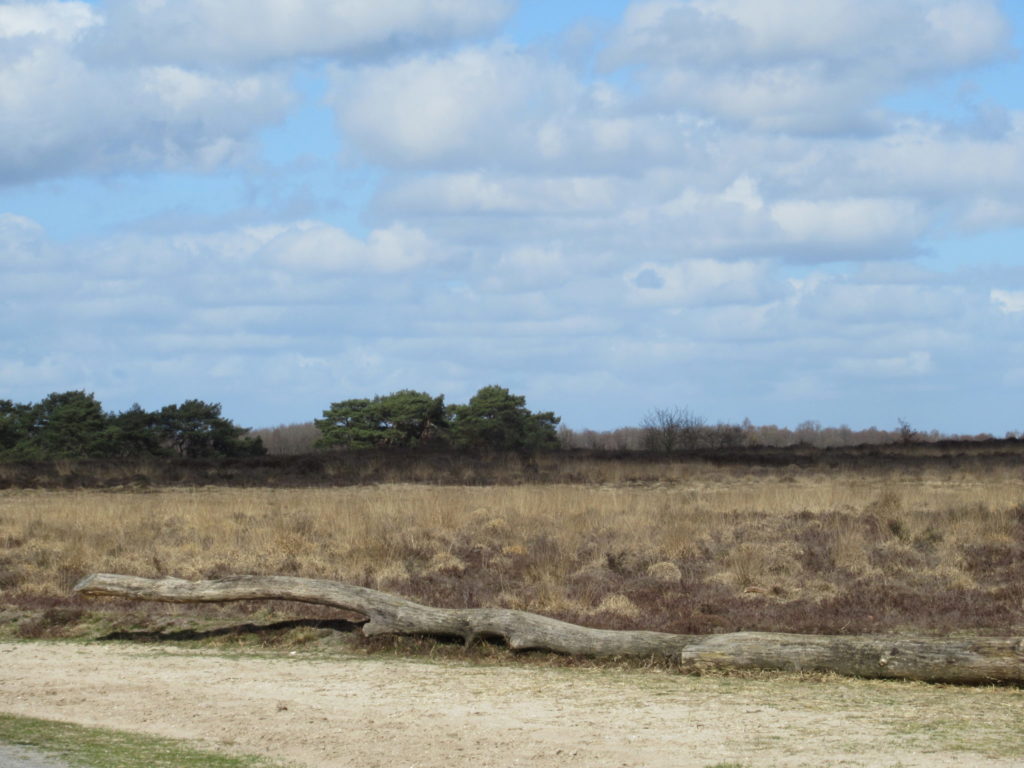
We didn’t have to walk very far before we spotted the flock of sheep in the distance:
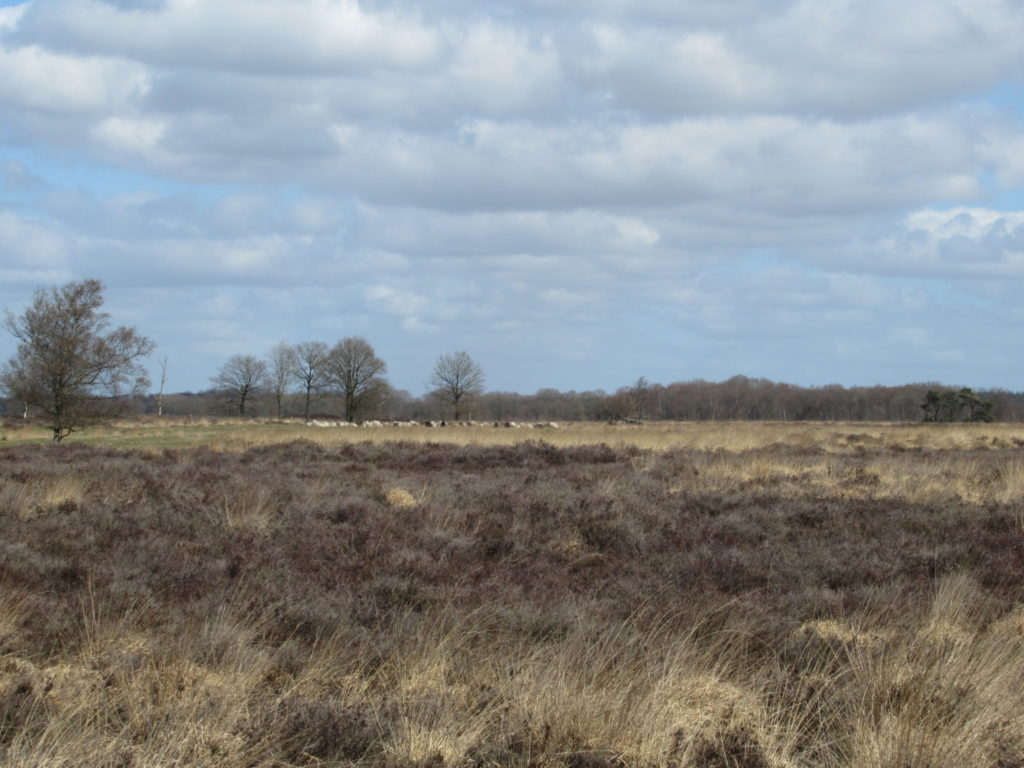
Walking on, we lost sight of them for a while. Why? Well, in my pictures the landscape looks flat, while it is in fact slightly undulating. But soon enough, climbing a hillock, we suddenly saw them again. And sitting in a sheltered spot, leaning against his rucksack, was one of the two shepherds who own this flock, keeping an eye on his sheep.
And he was not alone. His two sheep dogs were with him. One of them is a border collie, like many other shepherds in this area have. And the other one is an Australian Kelpie. Meet Woods:
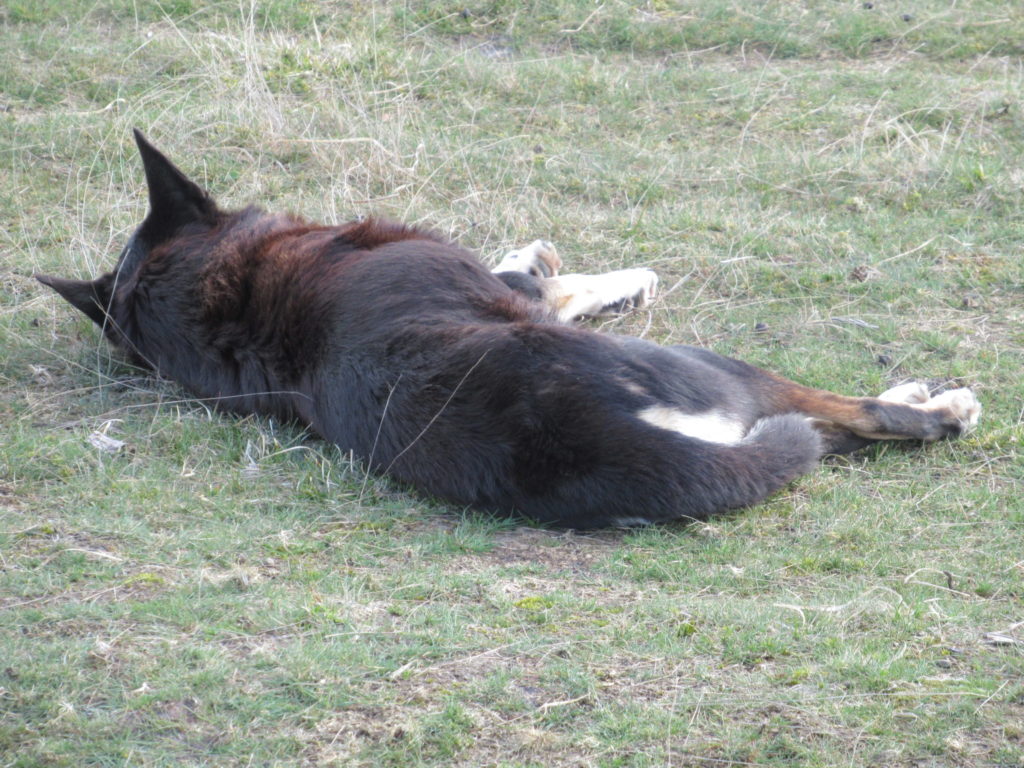
Oh, what a lazy dog! Just lying around enjoying the sunshine instead of minding the flock. Or is he? Look at his ears – they are not resting at all, but on the alert all the time. And as soon as they register something he sits up:
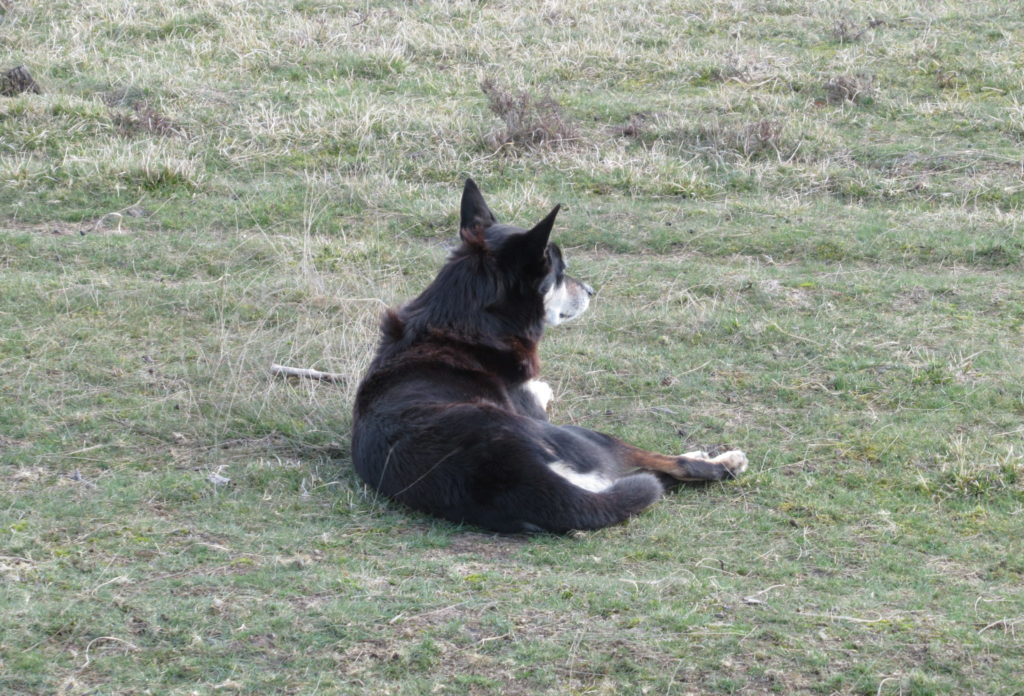
The shepherd told us that Woods is a dog with a natural instinct for herding. A really reliable dog. ‘If we get back to the fold at the end of an afternoon and Woods keeps looking back, you can bet your boots that there’s a stray lamb left behind,’ he said.
Talking about lambs – where are they? Well, as it turns out we were a bit early in the year. There were only six lambs as yet. They were hidden among the adult sheep, but I was able to take a snapshot of two of them. Can you see them?
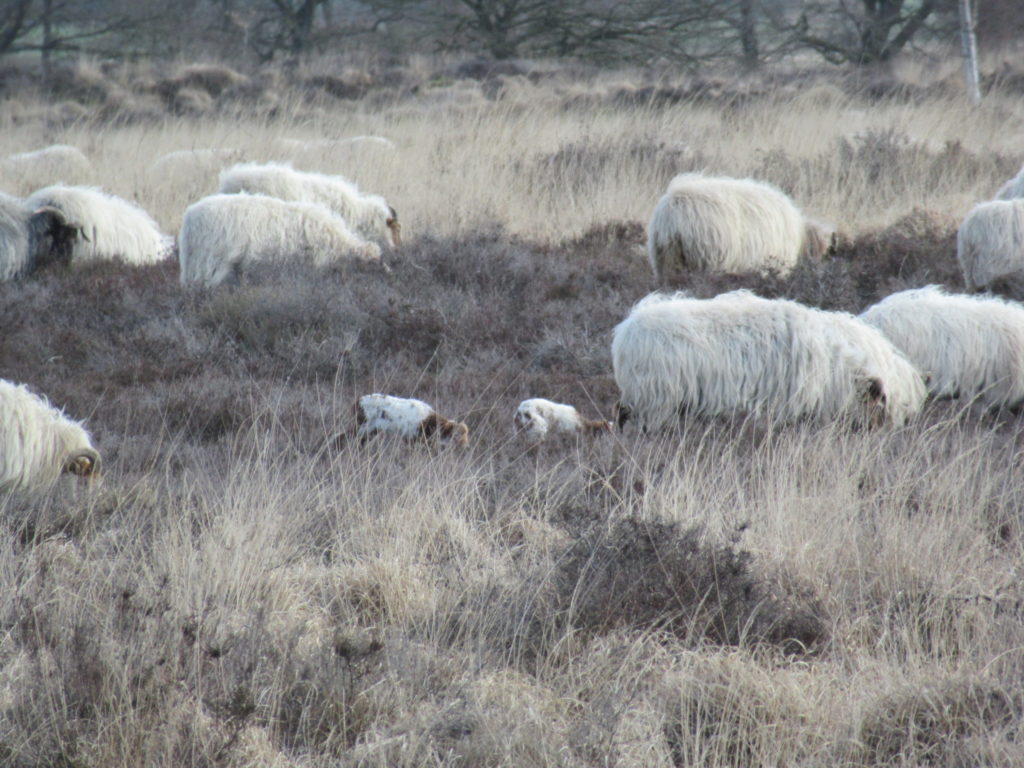
These sheep are again of the Drenthe Heath sheep breed, about which I wrote in A Chat with a Shepherd. And here, too, their main job is nature conservation.
The shepherds of Balloo have the biggest flock in this part of the country, with over 400 sheep before the lambing season. As is usual for Drenthe Heath sheep, their colours range from (almost) white to black, with other colour variations in between.
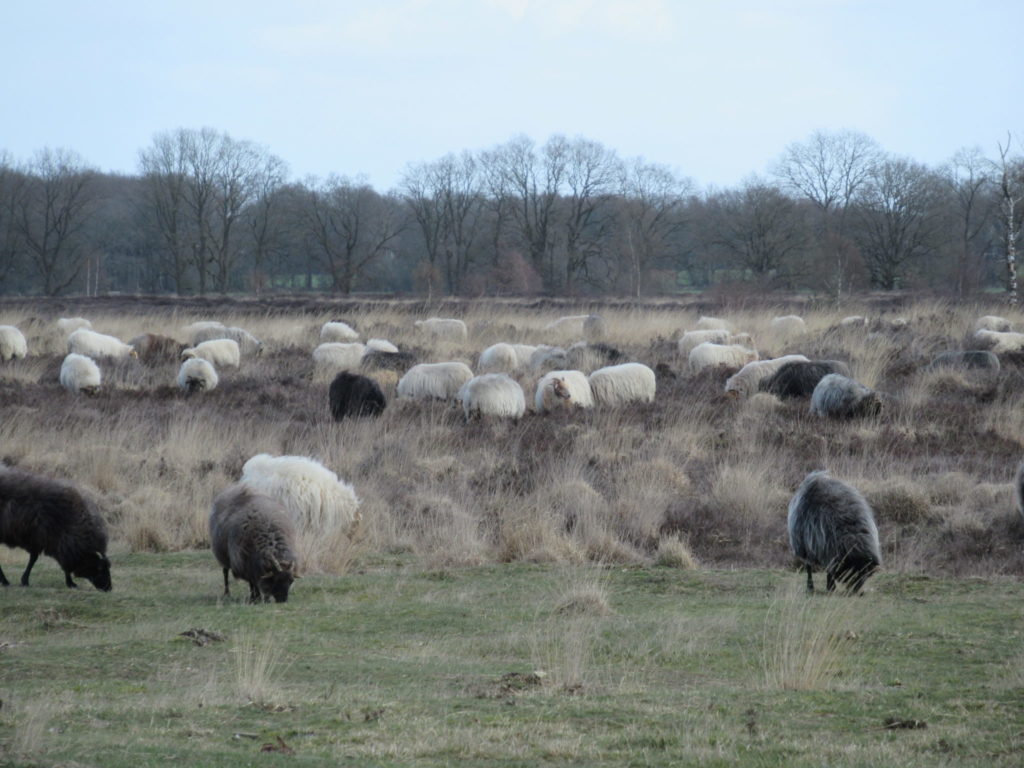
What interests me, of course, is what happens with the wool. In the Middle Ages wool was an economic factor to be reckoned with, and the wool trade brought great riches to parts of Europe. But we live in different times.
At my knitting group, last week, I was shocked to hear that another shepherd with Drenthe Heath sheep receives literally nothing at all for his fleeces! His fleeces are shipped to China, as some kind of waste product, to be used in the carpeting industry.
At Balloo things are looking better, I’m glad to say. Along one wall of the fold I saw stacks and stacks of plastic bags filled with fleeces.
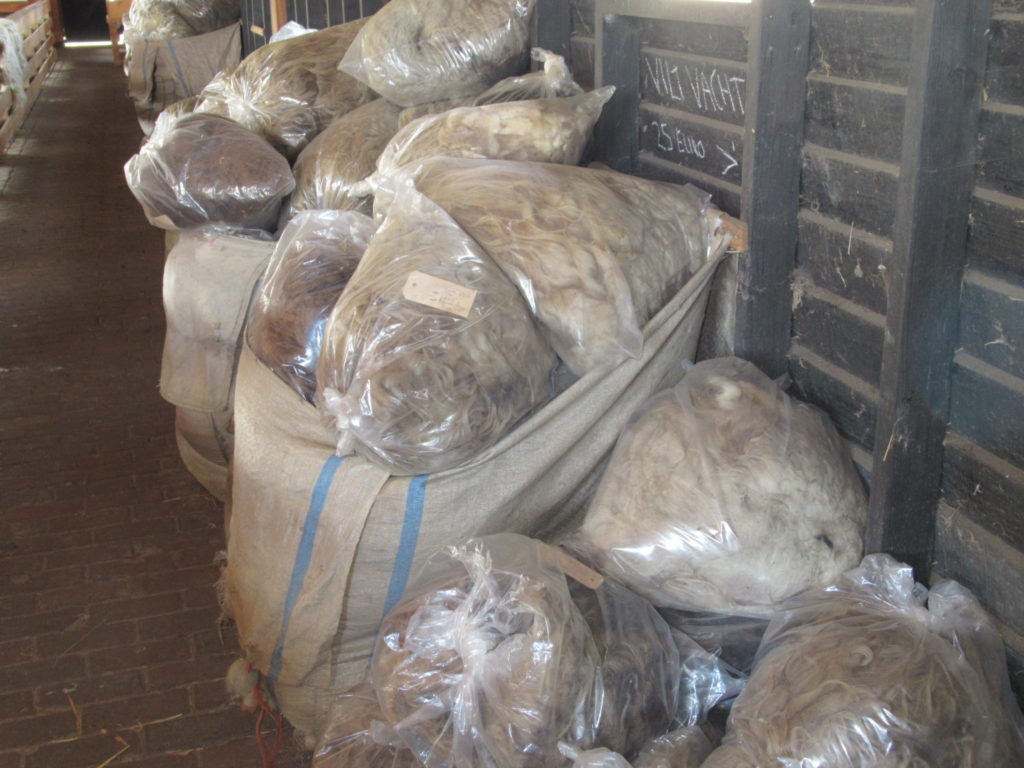
Fleeces in all of the colours Drenthe Heath sheep come in are offered for sale. Each bag has a label describing the specific properties of that particular fleece. I read things like: ‘Ideal for felting’, ‘Good quality for spinning’, ‘Fleece with especially long locks’, etcetera.
An entire fleece would be too much for me, at the moment, but fortunately I was able to buy a smaller quantity of wool. I am looking forward to trying out how it feels in my hands and how it spins up. I need to finish spinning and plying some other wool on my bobbins first, but when I have something to show, I’ll definitely let you know.
More information
There are two websites dedicated to the Balloo sheep. I don’t quite understand why. One seems to be the shepherds’ own website, and has information about the flock and the wool studio (more about that some other time). The other website provides similar information about the flock, as well as a description of the landscape.
